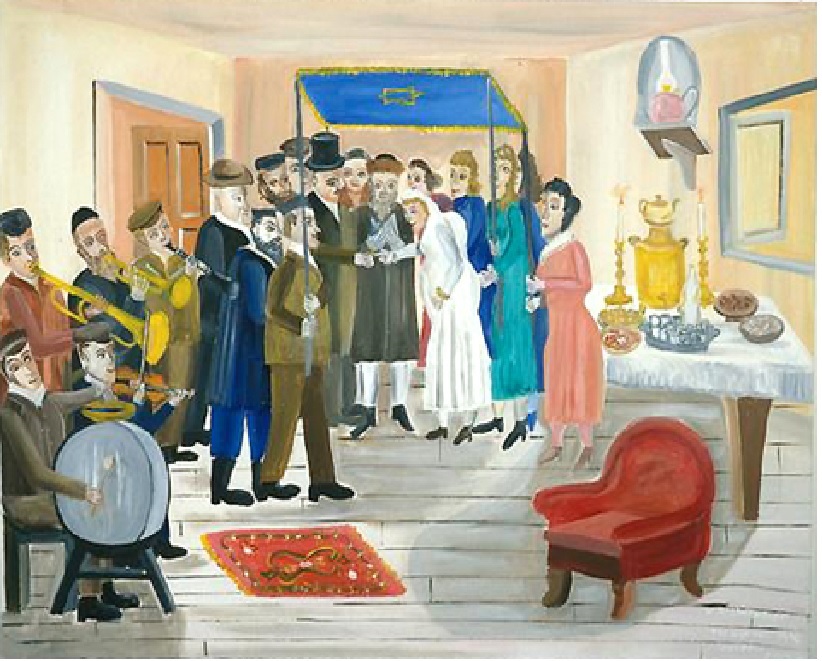Jewish life in Vilkaviskis under the Russian Rule
This material has been collected from personel memories and archival materials.
WHAT THEY ATE
VILKAVISKIS
A small town in Southern Lithuania
Where the Jewish Community is no more
Thiis site was built by Ralph Salinger of Kfar Ruppin, Israel
It is built to the glory of the Jewish Community of Vilkaviskis
You can contact me with any comments at salinger@kfar-ruppin.org,il
WEEKDAY MEALS
In the mornings, mothers prepared lunches for their children to take to school. Usually the meal consisted of bread smeared with shmalts [chicken or goose fat], and compote [fruit dessert] as well as juice.
HERRING
Litvaks prized a slice of herring. Smoked, pickled, or chopped herring were popular home meals. Smoked fish alone created a meal. Fish was less expensive than beef and was a popular dish because the area was blessed with nearby rivers and the Baltic Sea. When the ice broke up in the spring some men reduced their cost of living by catching fish in a big barrel. If the price of herring was too expensive for the family, then a kopeke worth of brine from the herring barrel with a potato had to suffice. Potatoes and herring were considered, in Hebrew, [food fit for a king].
POTATOES AND VEGETABLES
The humble potato was a favorite staple on the tables. It was filling, plentiful and, most importantly, cheap. The folk song ―Bulbes‖ [―Potatoes.” [―Sunday, Monday, Tuesday, Wednesday, Thursday, and Friday potatoes, and Saturday, potato pudding.] At Chanukah, latkes [potato pancakes] were served. Oftentimes, potatoes and pickles were served together as a meal. If the family had a cellar, they put away food for the winter, usually a barrel or two of sauerkraut, a keg of pickles and a few bags of potatoes, beets and carrots.
SOUP AND BEANS
When resources are low a winter recipe could be created groypn mit gornit [together with nearly nothing], using only a few ingredients such as a pot full of water, a handful of barley, an onion or two, and pepper or just with hot water and fat. When boiled, it was served with plenty of pieces of bread and a spoonful of shmalts. Stale bread was made into bread soup. Boiled chickpeas were another popular meal. Pickles: The lowly pickle had a place of honor in the diet. Nearly every household prepared a barrel of pickles, and women took great pride concocting unique sour pickle preparation methods.
TEA
A favorite brew in the homes was tea. It might be used as a medicine, as a warming agent in winters, and for cooling in summers. It was handy for entertaining visitors. Tea washed down a heavy meal. From Friday until Saturday afternoon teatime, the tea kettle was kept hot in the neighborhood bakery. Tea served as a filler, especially when hardship struck. When nothing was available to drive away hunger, bread and a reliable glass of tea might fill an empty stomach. The government, under Russian control, derived a generous income from duties on tea. However, thanks to smuggling from across the German border, not all of the tea came burdened with taxes. A few families made their living by bootlegging tea. A paternal aunt took pride in telling the story of how in her youth she carried tea in her bosom across the border.
GOAT’S MILK
Among the most popular animals were goats. They were inexpensive to own, since they ate whatever the family could afford, such as potato peelings, or they foraged for themselves. During the summers children enjoyed taking the goats grazing. The goats earned the title ―the poor man's cow, as they nourished the family with rich milk within the family budget.









